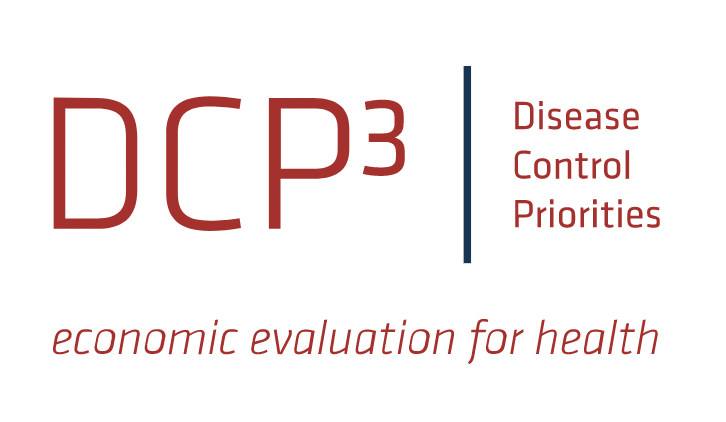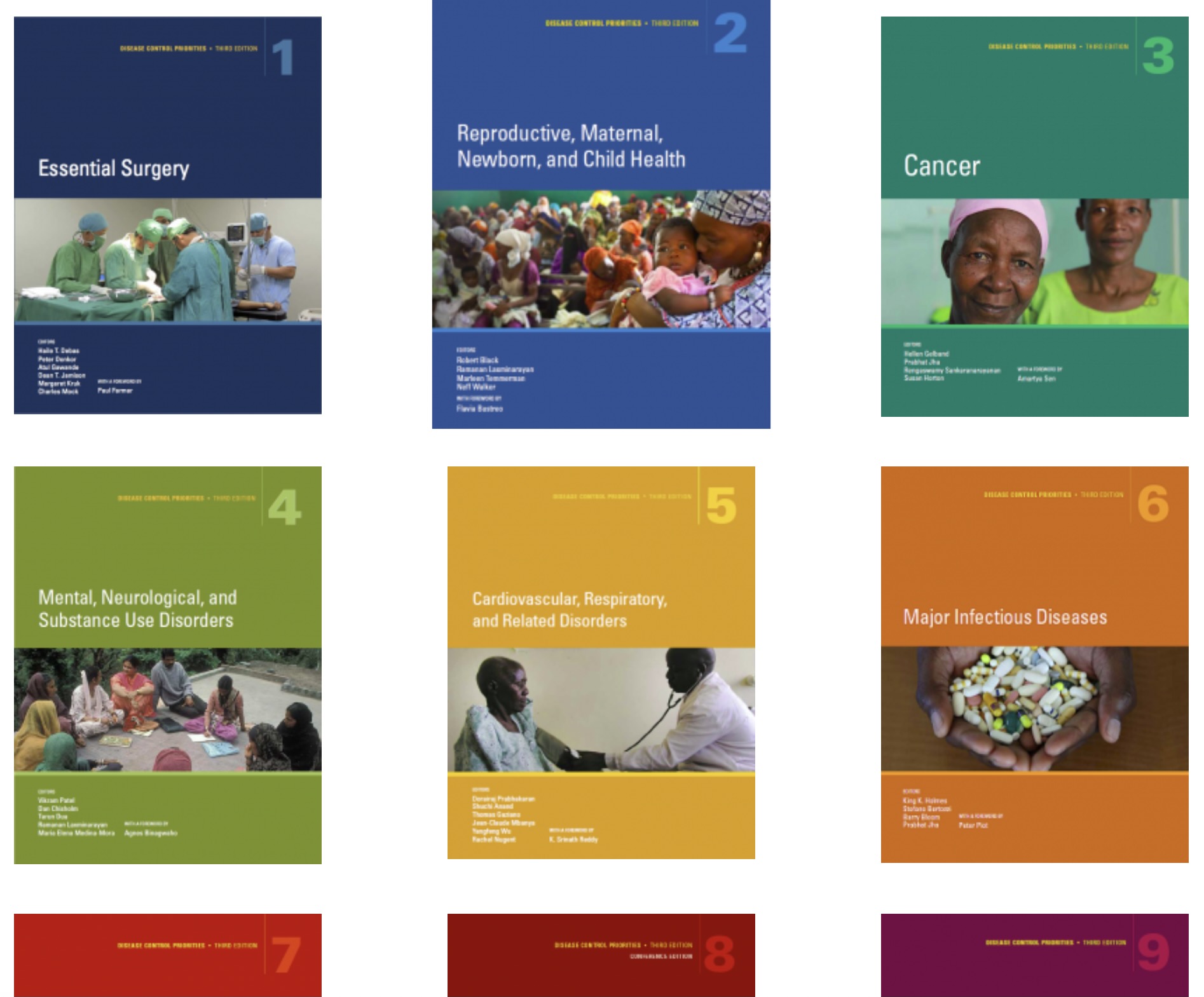6. Curating model parameters
Learning Objectives and Outline
Learning Objectives
Classify model parameters across different economic perspectives
Characterize the data collection approaches for cost-effectiveness studies (i.e., alongside clinical trials versus secondary data collection)
Identify resources and tools for collecting both cost and benefit parameters
Outline
- ICER review
- Perspective
- Data collection
- Numerator: Costs
- Denominator: Effects
ICER review
C1−C0(ΔC)E1−E0(ΔE)
Numerator (costs)
Valued in monetary terms
- E.g.,
$USD / ₦NGN / KES / R
Denominator (benefits):
Valued in terms of clinical outcomes
- E.g.,
# of HIV cases prevented
# of children seizure free
# of quality-adjusted life years gained
- What’s important for the question at hand
- Most analyses report several different outcomes
- QALY/DALYs enable comparability across disease areas
Perspective matters
Formal healthcare sector
Costs: Medical costs borne by “third-party payers” & paid for out-of-pocket by patients
Benefits: Health impact to patient & if relevant, family/unpaid caregiver
- In many countries, this might mean “donor payers” and/or largely out-of-pocket costs by patients.
- This might also include “program costs” paid for by donor of government entities
- Ideally, costs from a healthcare sector perspective should include current + future costs, related & unrelated to the condition under consideration
Societal perspective
Represents the wider “public interest” & inter-sector distribution of resources that are important to consider
- Includes patient transportation/travel, non-medical out-of-pocket costs, and time/productivity costs
- May include family/informal caregiver costs related to transport/travel, non-medical out-of-pocket costs, time/productivity costs
- Presenteeism (i.e., lost productivity when individuals are not fully functional at work due to illness)
- Absenteeism (i.e., time absent from work as a consequence of illness)
Data collection
Two approaches:
(1) Alongside clinical trials
(2) Using secondary data
1. Data collection alongside clinical trials
Costs (clinical trials)
Source: Gold 1996, Drummond 2015, Gray 2012)
Identify – Estimate the different categories of resources likely to be required (e.g., surgical staff, medical equipment, surgical complications, re-admissions)
Measure – Estimate how much of each resource category is required (e.g. type of staff performing the surgery and time involved, post-surgery length of stay, re-admission rates)
Value – Apply unit costs to each resource category (e.g., salary scales from the relevant hospital or national wage rates for staff inputs, cost per inpatient day for the post-surgery hospital stay)
Costs (clinical trials)
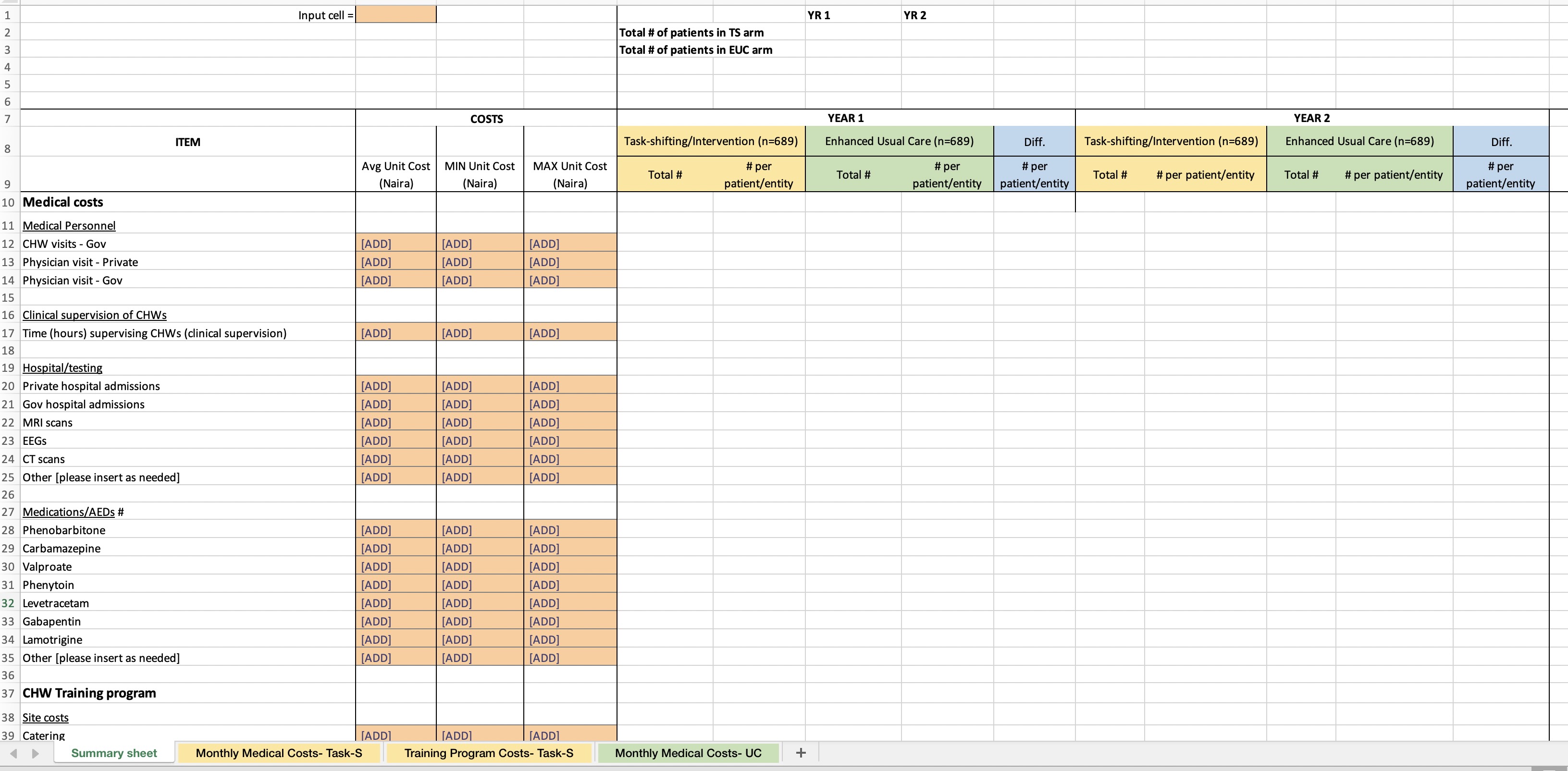
Costs (clinical trials)

Costs (clinical trials)
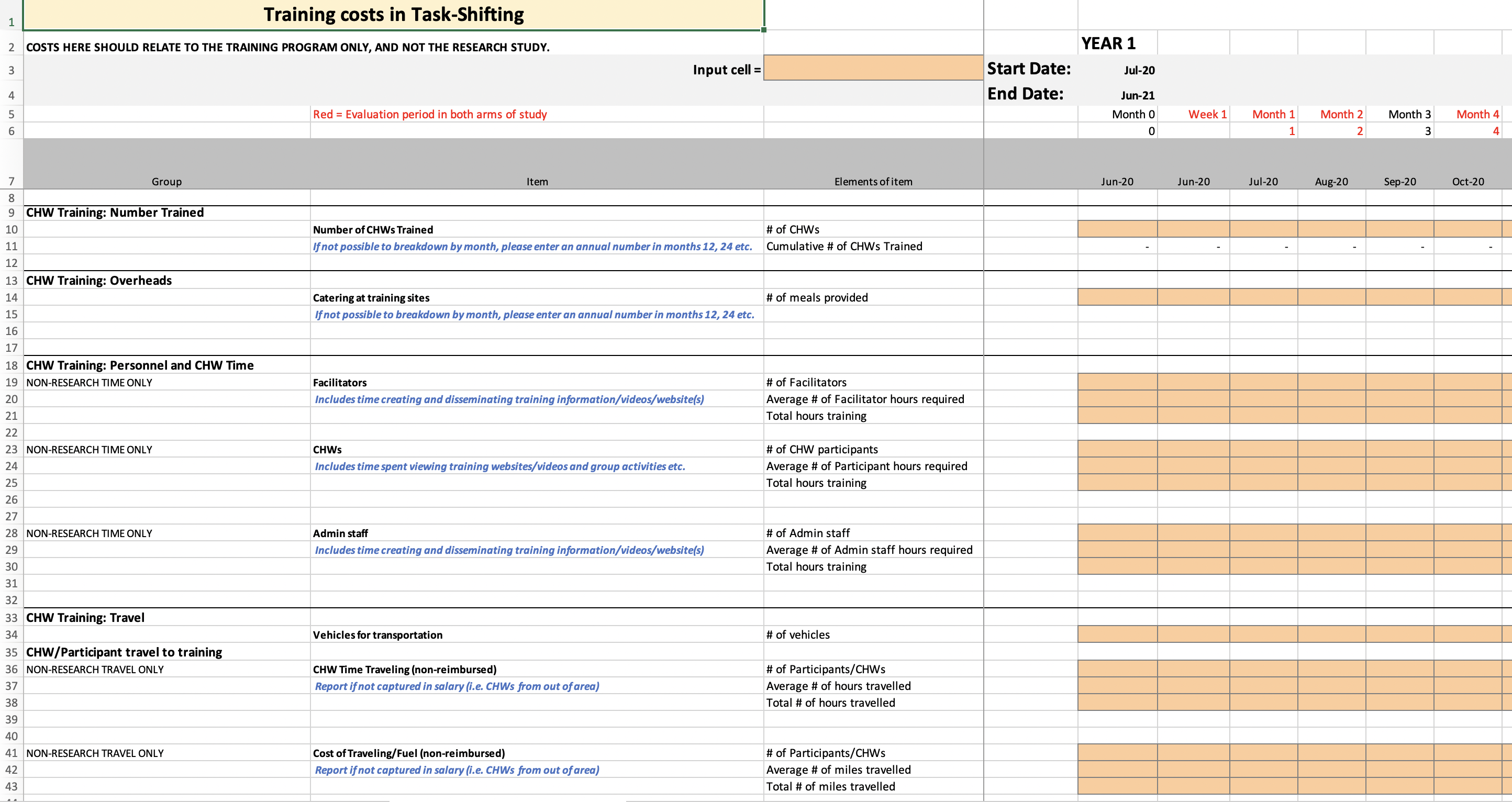
Effects (clinical trials)
- Important clinical outcomes of the trial (e.g. cases or deaths averted)
- If seeking to measure QALYs gained, the EQ-5D (an indirect preference-based weight tool) can be obtained in several different languages
- visit: euroqol.org/eq-5d-instruments/all-eq-5d-versions/
- Age/proxy requirements can also be found on this site
Effects (clinical trials)
If seeking to measure DALYs averted (DALYs typically utilizes standardized disability weights):
Published Global burden of disease weights can be used alongside other data points collected in the clinical trial, such as “age of onset of disease.”
Other data needed to calculate DALYs, such as “life expectancy” due to disease/stages of disease, can also be estimated (more on that in the “secondary data” section)
Effects (clinical trials)
Since disability weights are freely & publicly available (these weights are required for DALY calculations), it can reduce costs/time/resources compared to collecting QALY estimates
Productivity/time associated costs (clinical trials)
- Productivity (presenteeism & absenteeism) can be measured with validated instruments such as the Work Productivity and Activity Impairment Questionnaire (WPAI), among others published
- Scores from these instruments can be used to estimate the % of work-related productivity loss, which can be monetized based on assumptions on population wage and number of hours typically spent working
2. Using secondary data only
Costs (secondary data)
(Same approach as for clinical trials above)
Identify – Estimate the different categories of resources (e.g., surgical staff, medical equipment, surgical complications, re-admissions)
Measure – Estimate how much of each resource category is required (e.g. type of staff performing the surgery and time involved, post-surgery length of stay, re-admission rates)
Value – Apply unit costs to each resource category (e.g., salary scales from the relevant hospital or national wage rates for staff inputs, cost per inpatient day for the post-surgery hospital stay)
Costs (secondary data)
- In country/hospital/donor data registries - key is to get as close to the “true” cost associated with each procedure per patient
- E.g., “TB healthcare & diagnostics are from official price list of the National Health Laboratory Service in South Africa; Costs for follow-up reflect local clinic and culture-based screening for active-tuberculosis”
- Review of published literature
- Tufts CEA Registry
- DCP3: Disease Control Priorities
Costs (secondary data)

Costs (secondary data)

Costs (secondary data)
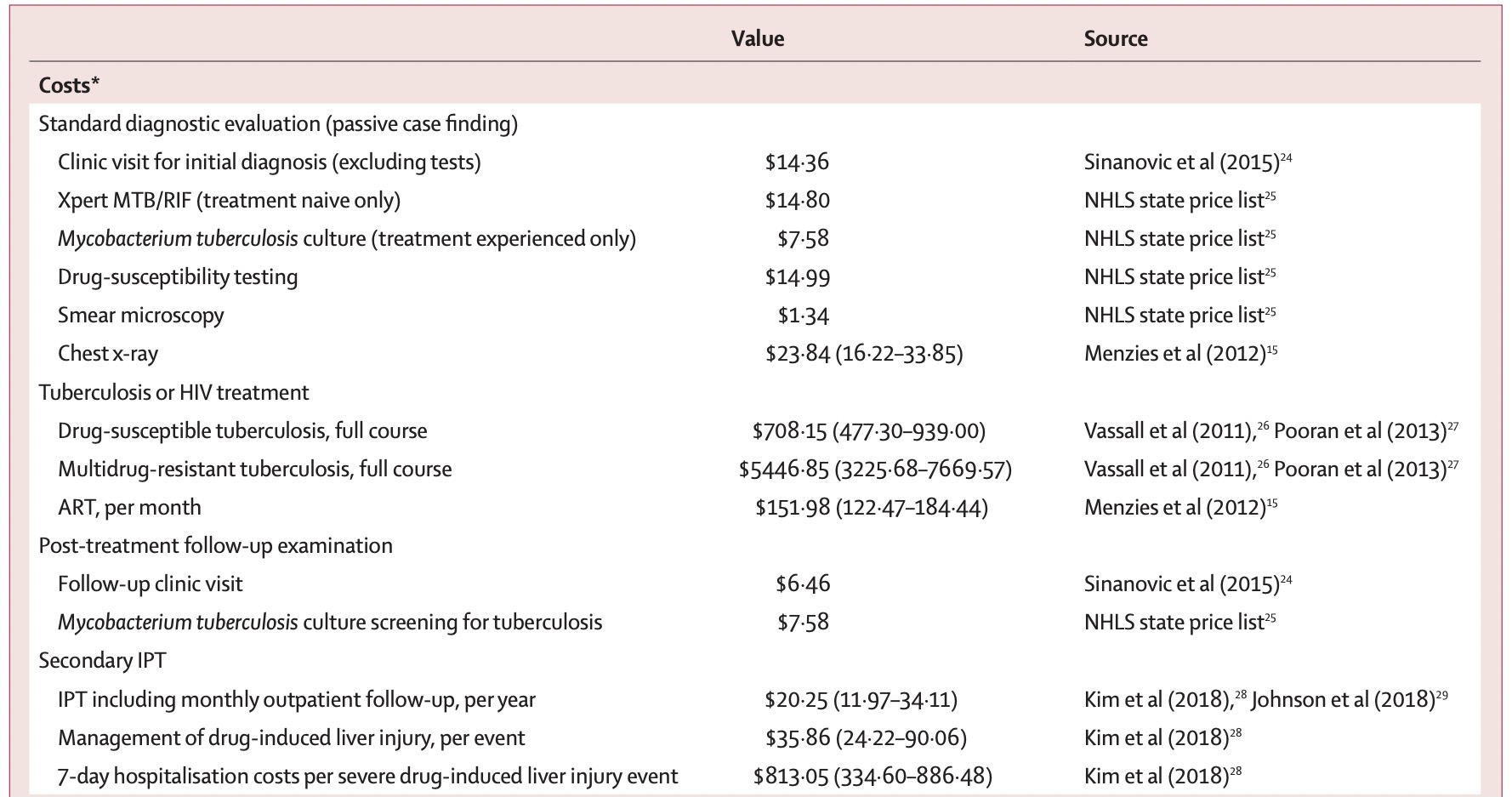
Costs (secondary data)
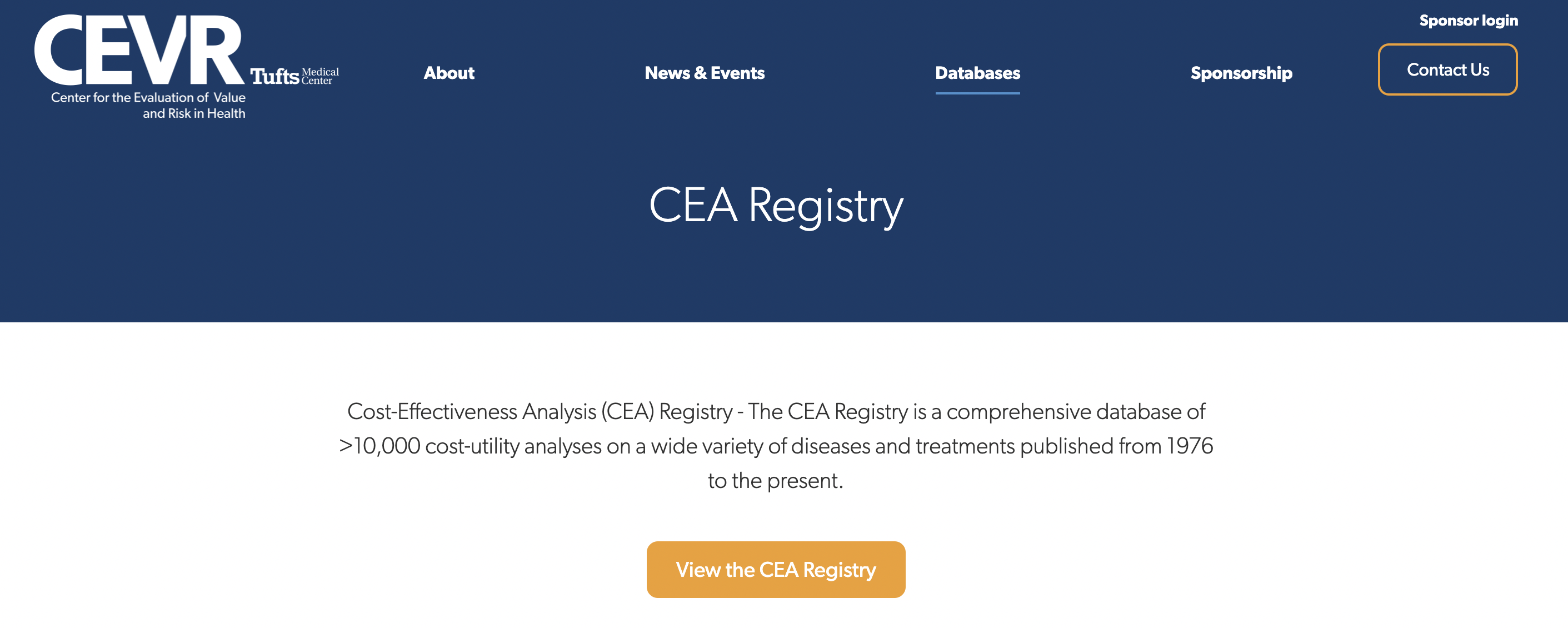
https://cevr.tuftsmedicalcenter.org/databases/cea-registry
Costs (secondary data)

Costs (secondary data)
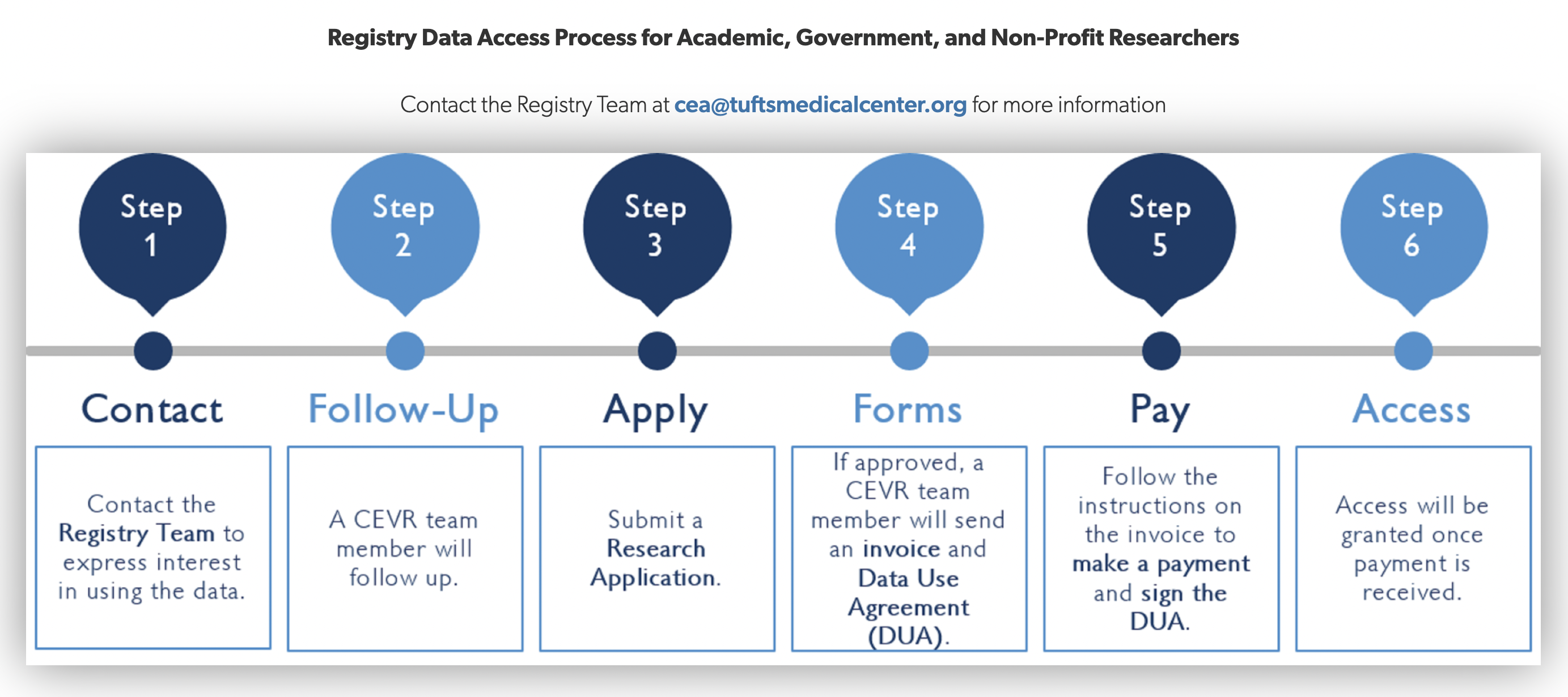
Costs (secondary data)
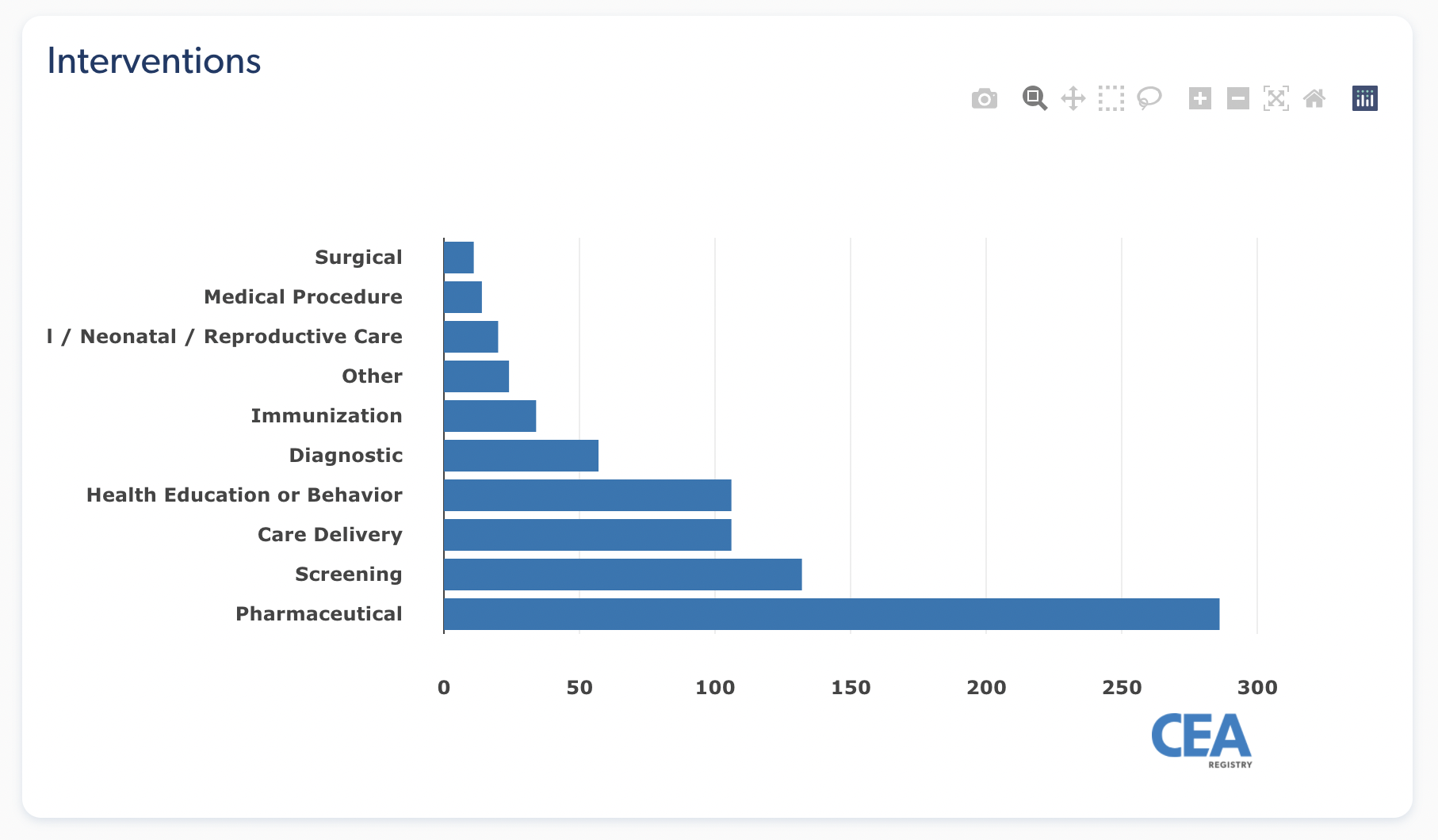
Costs (secondary data)
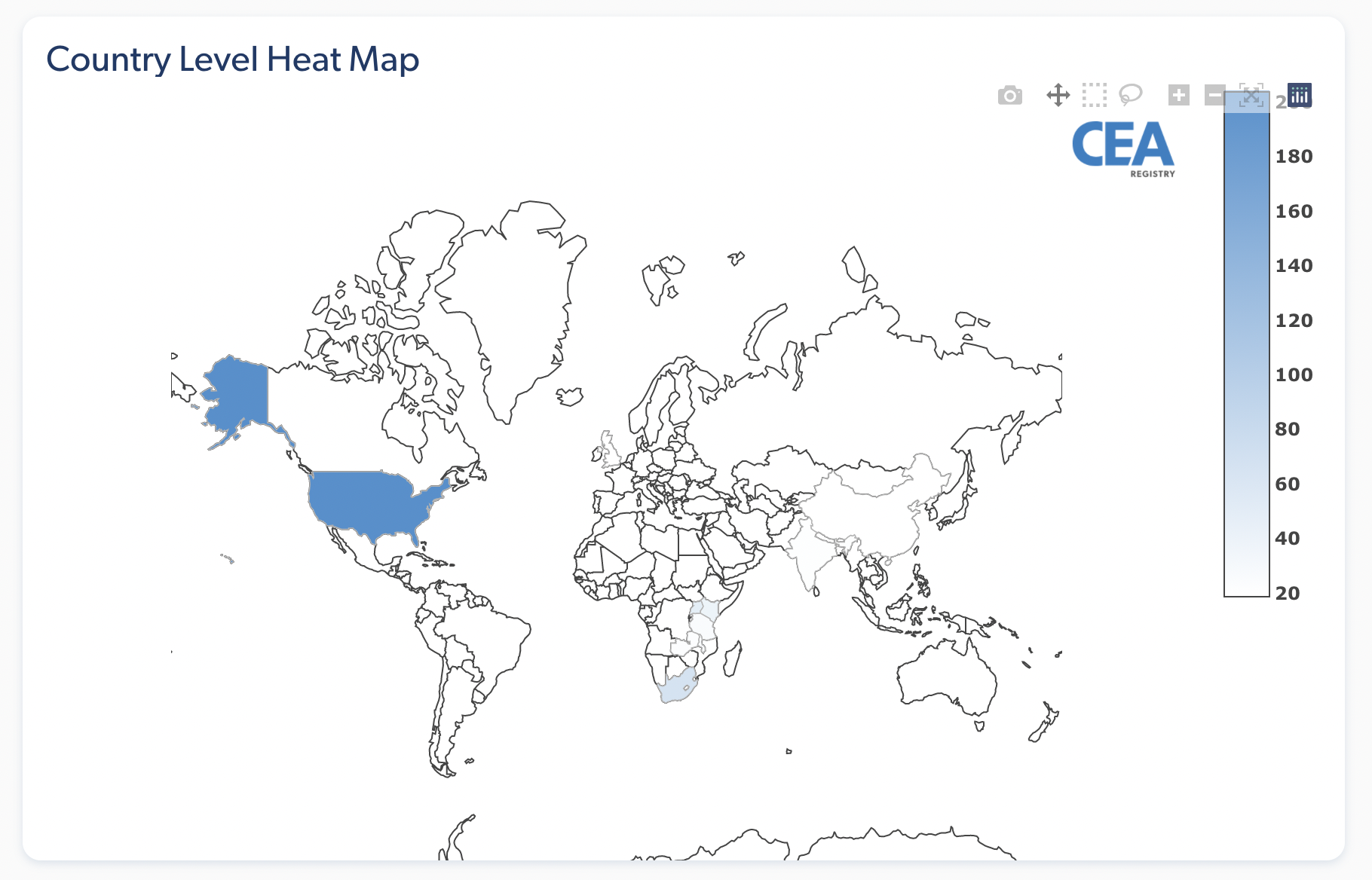
Costs (secondary data)

http://ghcearegistry.org/ghcearegistry/
Costs (secondary data)
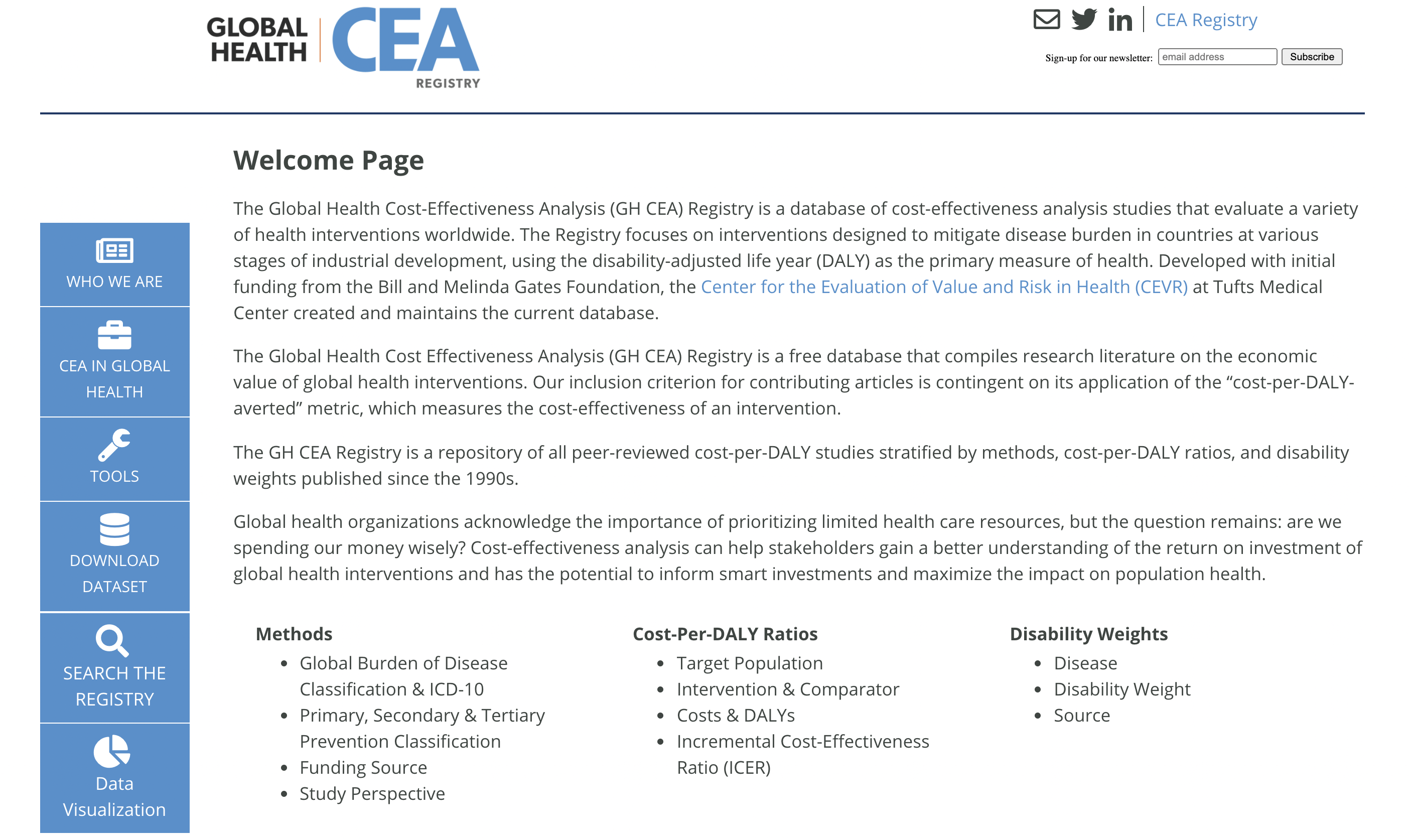
Costs (secondary data)
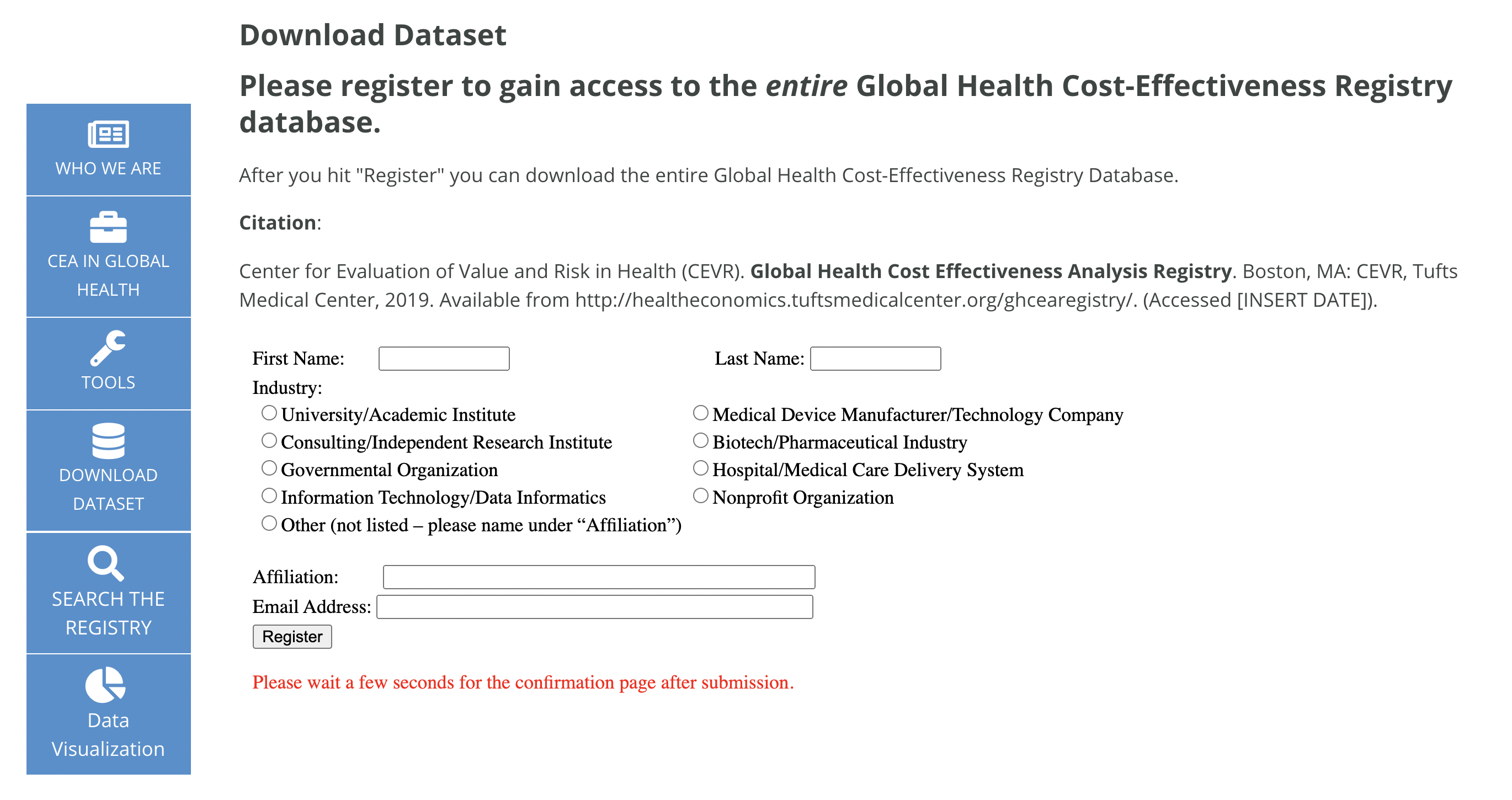
Costs (secondary data)
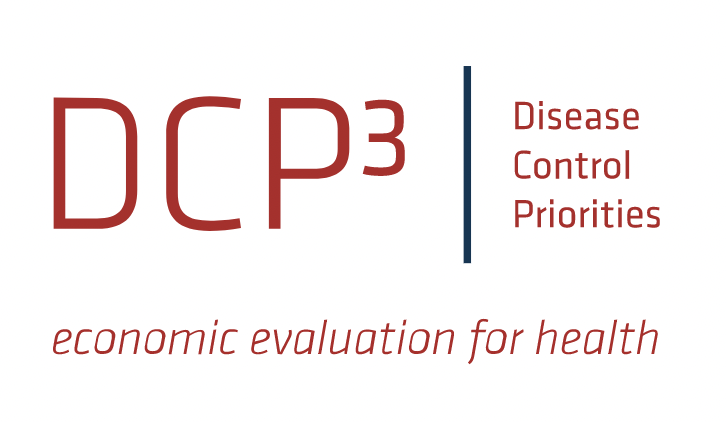
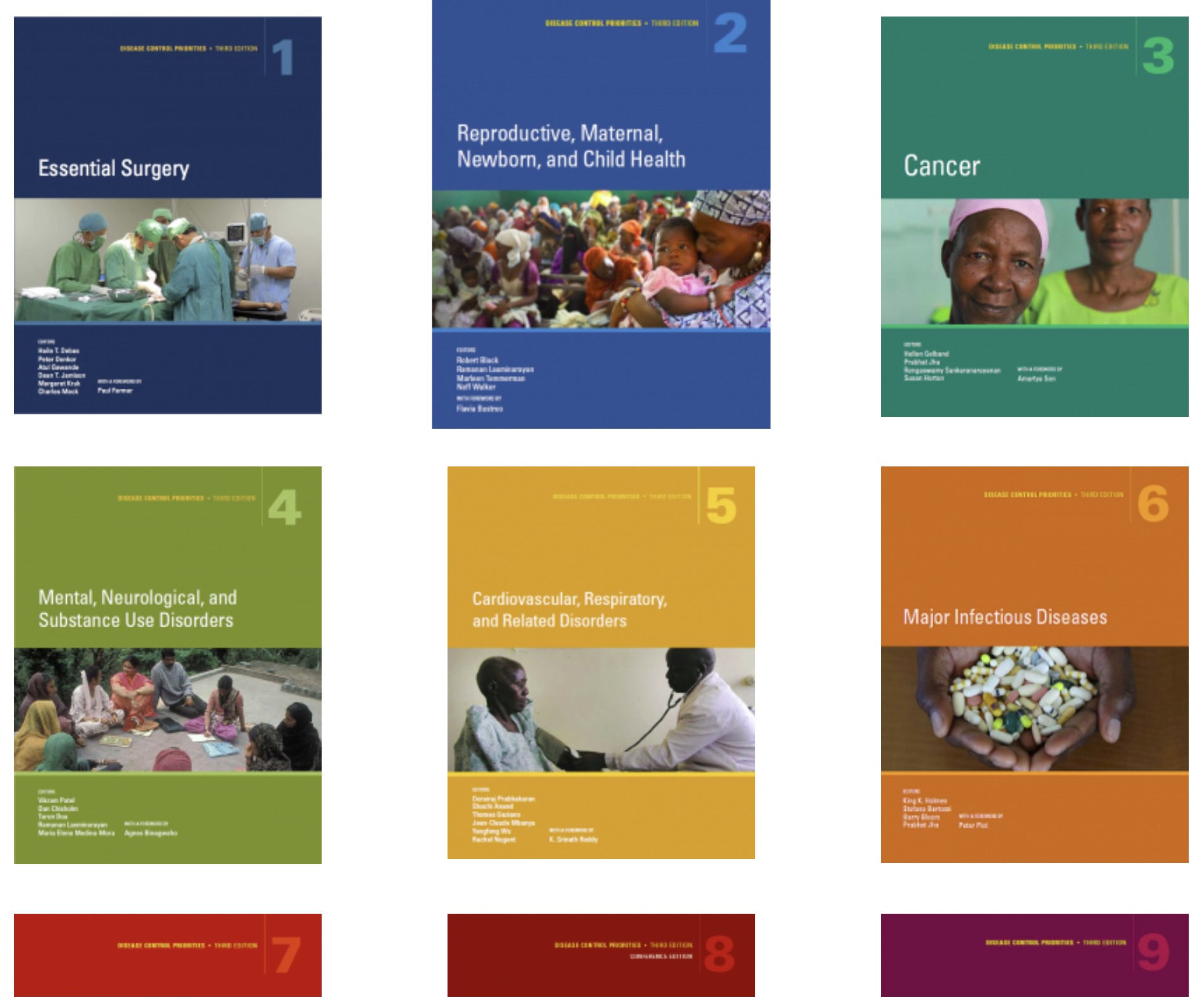
Costs (secondary data)
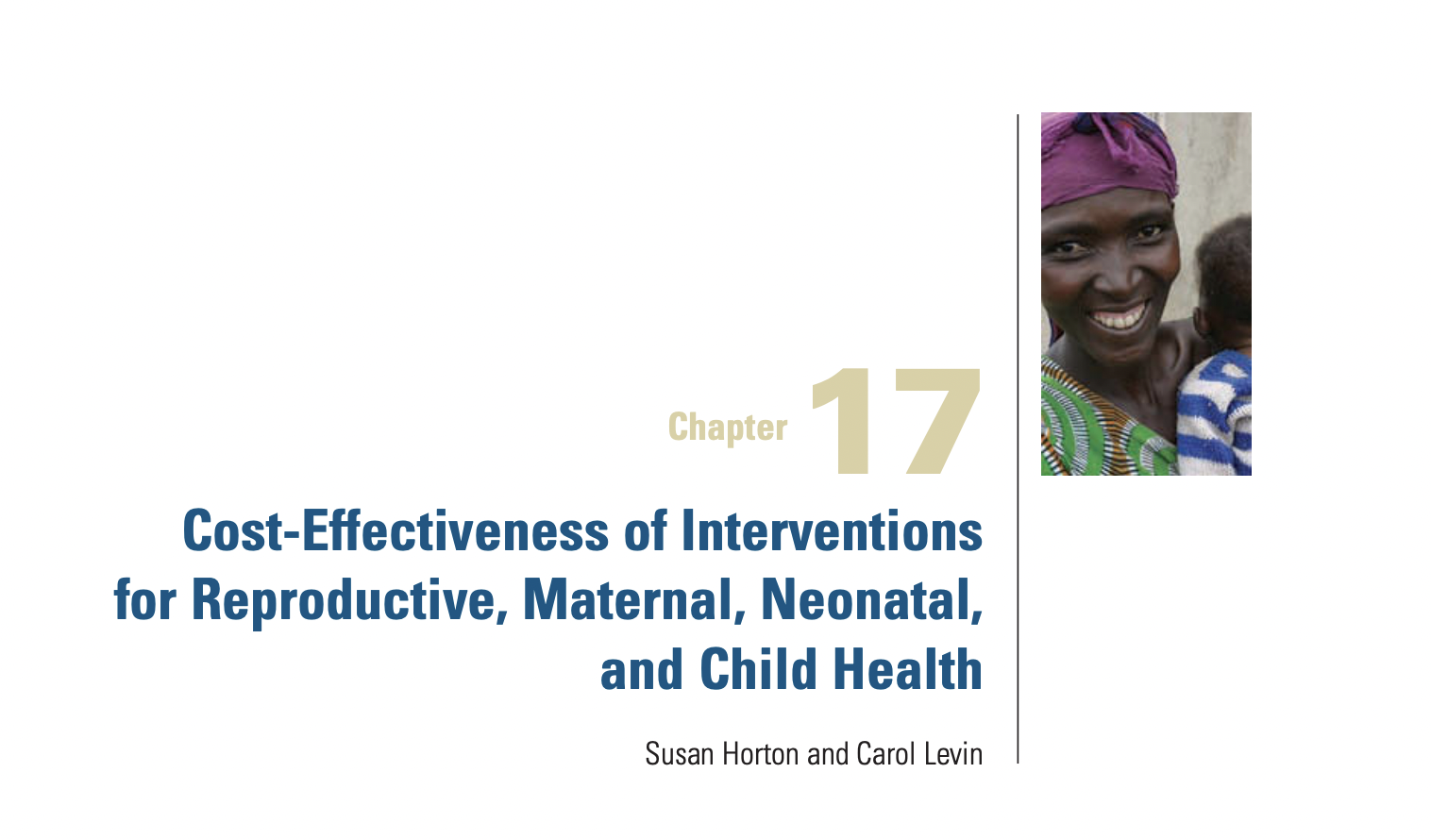
Costs (secondary data)
Up until now, we focused on Micro costing (bottom-up) (e.g., for treatment-specific costs); Identifying & measuring each resource utilized and applying unit costs
Gross costing (top-down) estimates the cost of an event or condition; can capture important downstream costs (e.g., hospitalizations due to “opioid” relapse/recurrence)
Costs (secondary data)

Effects (secondary data)
- IHME Disease-specific rates
- Global burden of disease | Tufts DALY calculator |
- DCP3
- Other literature/RCTs/Meta-analyses/etc. - including Tufts registries that we just reviewed + other!
Effects (secondary data)
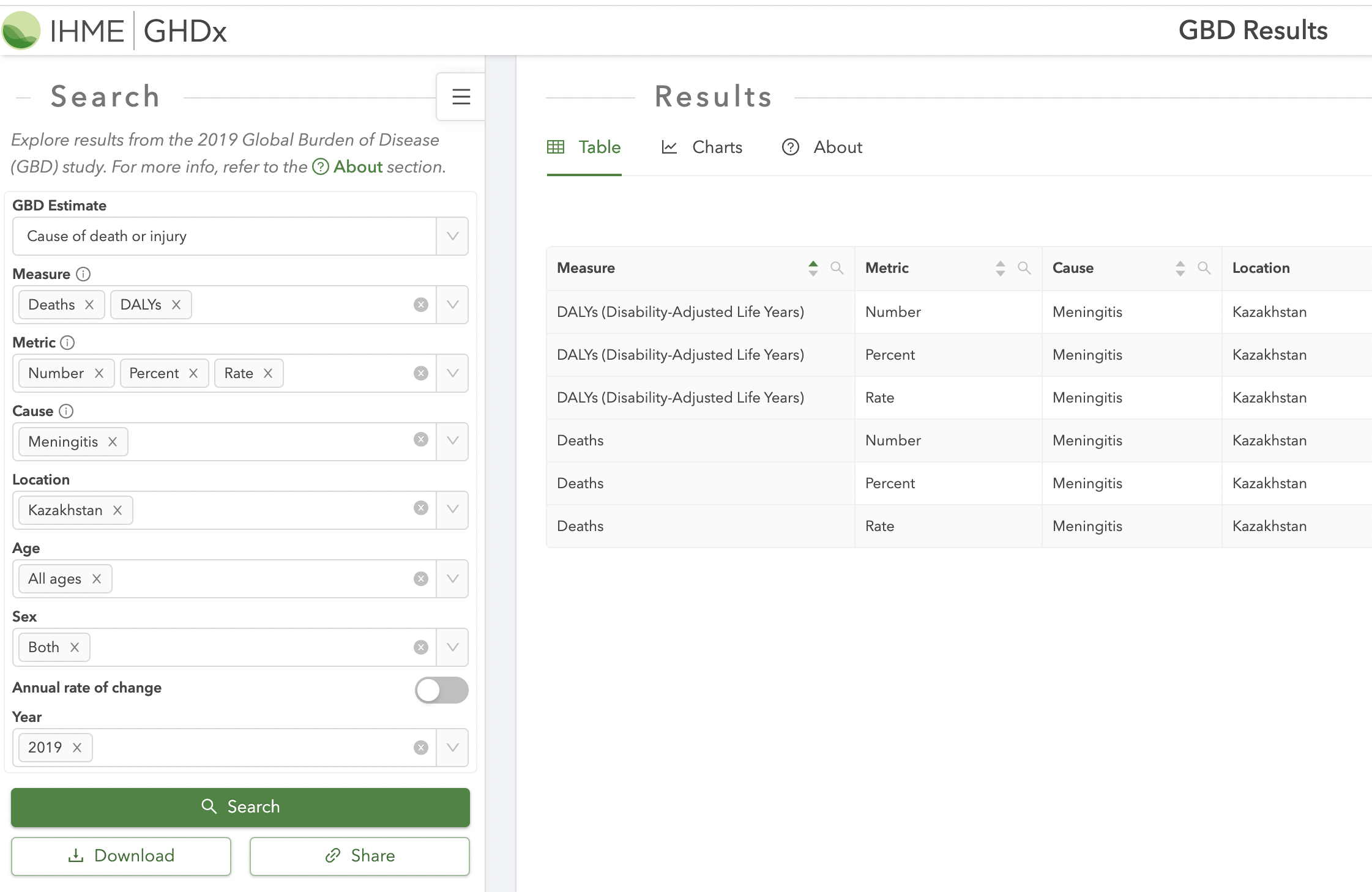
Effects (secondary data)
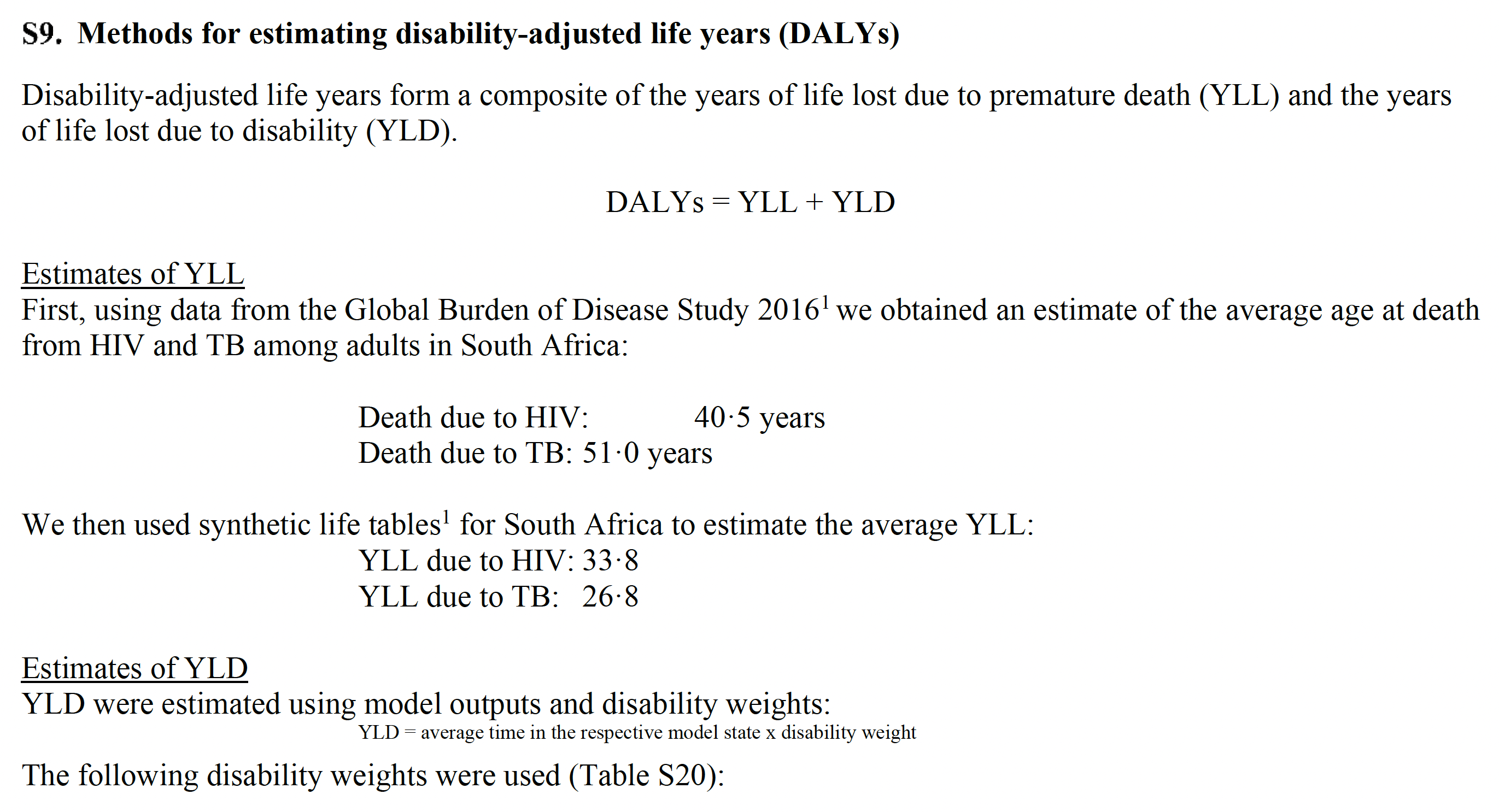
(Marx et al 2020)
Effects (secondary data)

(Marx et al 2020)
Effects (secondary data)

Effects (secondary data)

A tool that can convert health outcomes expressed in non-DALY metrics (e.g., cases or deaths averted) into DALYs – converted DALY measures can then be used to compare cost-effectiveness ratios of interventions across different disease areas (http://ghcearegistry.org/ghcearegistry/)
Effects (secondary data)
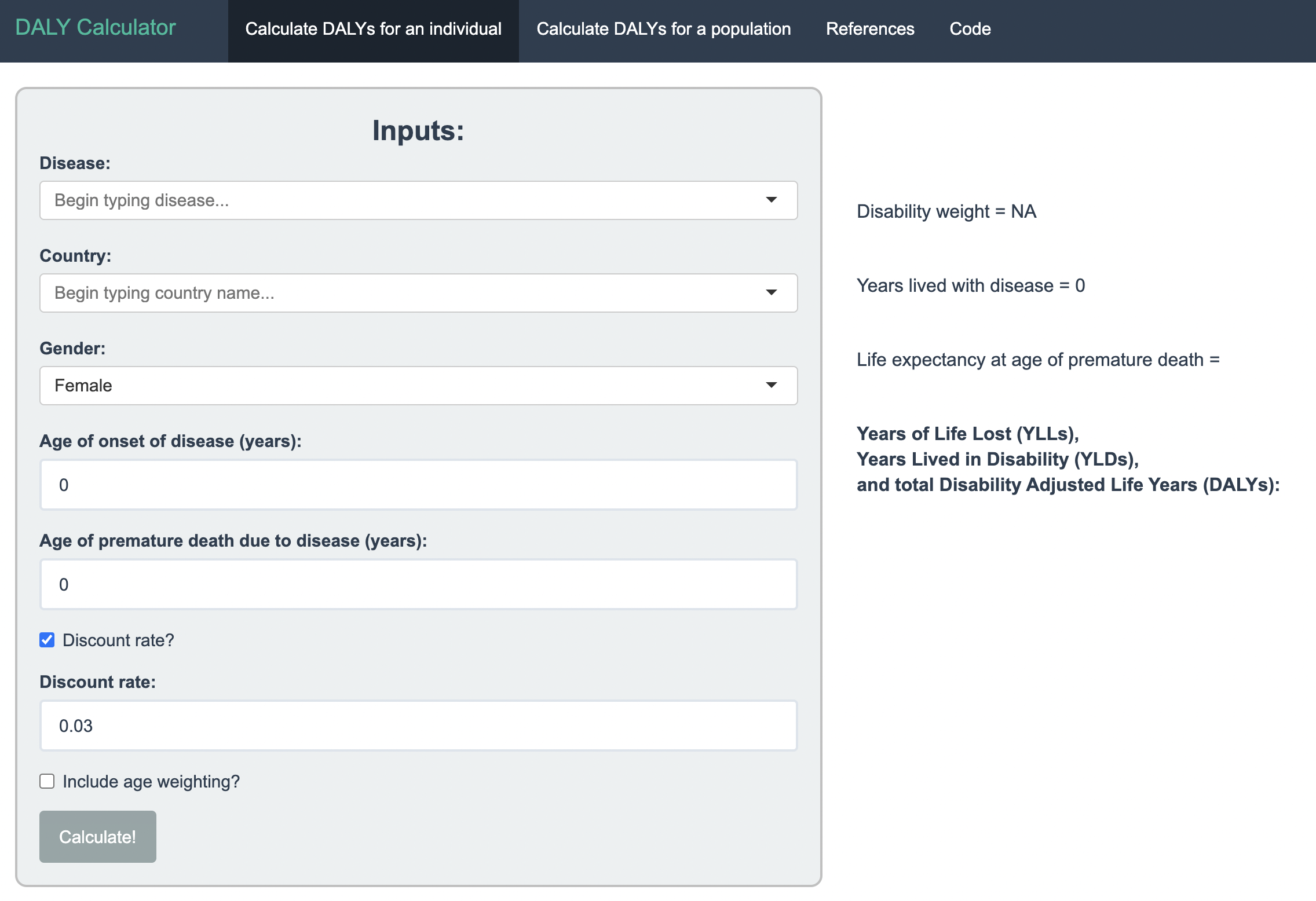
Effects (secondary data)
